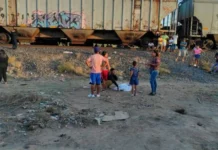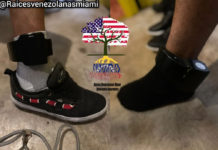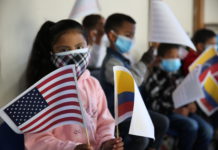
Flight to Canada: The refugee process
Last Updated: Thursday, August 12, 2010 | 3:29 PM ET
CBC News
Canada has long been seen as a desirable haven to those seeking asylum, providing sanctuary to American slaves covertly travelling the Underground Railroad in the mid-1800s to Displaced Persons arriving from Europe following the close of the Second World War to Vietnamese families arriving on the shores of Canada in the late 1970s.
But the process of accepting refugees has also stirred controversy. In the 1930s, Canada accepted a modest 4,000 Jewish refugees seeking asylum amid begrudging public acceptance.
In recent years, critics have claimed Canada’s refugee policy is too lax, allowing rejected claimants to remain in the country too long. In June 2010, the federal government passed new legislation to speed the process of processing refugees.
In the first half of 2009, Canada fielded 18,700 new asylum claims, according to a United Nations report. In comparison with 44 other industrialized countries, Canada was the third-largest recipient of asylum applications, trailing the United States and France. The report also found the number of asylum applications in 2009 held steady with the year before, with 377,200 applications submitted.
Who can apply for refugee protection in Canada?
Canada provides refugee status to individuals in need of protection and to those who meet the definition of a convention refugee, as outlined in the 1951 United Nations Convention Relating to the Status of Refugees. Specifically, a convention refugee is a person who fears persecution in his or her home country because of race, religion, nationality, political opinion or membership in a particular social group.
Who is not eligible to make a claim?
A claim will be rejected from a person who:
- Has already been granted refugee protection in Canada or another country.
- Had submitted an earlier unsuccessful refugee protection claim.
- Came to Canada from or through a safe third country where they could have claimed refugee protection.
- Poses a security risk, has violated human or international rights, or committed a serious crime or participated in organized crime.
How does the sponsorship process work?
Groups or individuals can sponsor people seeking refugee protection in Canada so long as they are willing to provide financial assistance. Sponsors typically commit to providing financial assistance for one year. Refugees must qualify under Canada’s Immigration and Refugee Protection Act and must pass a medical and security test before entering the country.
How long does it take before a decision is made on a refugee protection claim?
New legislation was passed in Parliament in June in a bid to speed the processing of refugees. Under the new guidelines, claims are to be heard within 60 to 90 days and illegitimate claimants are to be moved out within two years. Citizenship and Immigration Canada notes, however, that the changes will be implemented within the next 12 to 18 months.
In 2008-09, the average processing time for each claim was 16.5 months and the processing cost of each claim totalled $4,100. In some cases, a decision can be reached within six months, according to the Immigration and Refugee Board of Canada.
How long does the appeal process run?
In 2008-09, the average processing time ran 11.1 months. The projected appeals time for 2009-10 is 11.5 months.
Who is applying for asylum in Canada?
According to the United Nations report Asylum Levels and Trends in Industrialized Countries, 2009, here are the top five populations of origin of asylum applicants:
- Mexico: 7,561
- Hungary: 2,518
- Colombia: 2,292
- Czech. Rep.: 2,016
- China: 1,484











